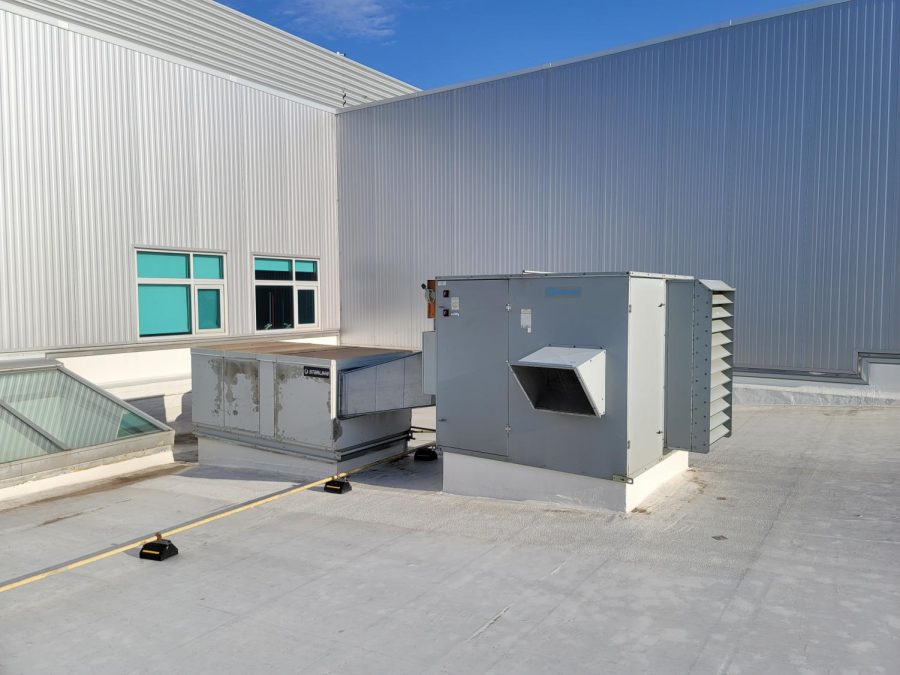Upgrades make airborne infections spread by Naperville Central’s ventilation system unlikely
Modular energy exchange units across the roof of the building, like the one pictured above, are responsible for filtering and climate control in different areas of the school.
November 16, 2020
In preparation for in-person learning, Naperville Central’s ventilation system underwent upgrades over the summer. The upgrades include adding MERV-13 filters to the general ventilation system and increasing air circulation.
The most common way COVID-19 spreads is through close contact with an infected person. The virus may also spread when an infected person speaks, coughs, or sneezes tiny droplets, called aerosols, containing the virus that can travel past the recommended six feet distance for social distancing, or linger in an area even after the infected person leaves the room.
The capability of COVID-19 to spread while airborne raises questions about whether students and teachers are really safe when a single infectious person can send aerosol particles that when picked up by the ventilation system, can spread across the school.
Central has taken steps to mitigate aerosol infections. The building’s general ventilation system is equipped with air filters rated at MERV-13, capable of filtering COVID-19 from the air. The upgrades, led by Cuauhtémoc Zarate, Facilities Director at Naperville Central, has also boosted the circulation of air through the school’s general and local exhaust system to four times its original value.
“I’ve been in [Naperville Central] every day making these changes and making sure that we [will] be safely operating for students, staff, and for myself,” Zarate said. “Quite frankly, I have a child that goes here. If I’m not comfortable with it myself, I definitely would not bring my child here.”
The upgrades to the building’s ventilation system have made students feel more comfortable about learning in person.
“It definitely makes me feel better about transmission by air,” sophomore Jen Tucker said after learning of the upgrades. “But close contact and surfaces are still a concern.”
There are ways for teachers to improve their classrooms’ circulation as well, like leaving their windows open.
“We actually welcome it, if it helps them bring in more fresh air,” Zarate said. “That’s perfectly fine. [The] only disadvantage would be [their] comfort level…when colder weather [comes].
Teachers are also allowed to bring their own homemade or purchased filtration equipment.
“I would recommend that they first reach out to [building] administrators first to get approval before they do that,” Zarate said. “I don’t see any issues with that other than getting [it] district approved.”
Furthermore, according to a statement by the CDC, “The risk of spreading the virus that causes COVID-19 through ventilation systems has not been studied but is likely low.” Research published in the journal Physics of Fluids by the American Institute of Physics seems to support the conclusion that aerosols that stay in the air for prolonged periods of time are not as potent as larger particles that fall onto surfaces.
This does not mean airborne transmission is impossible, rather, improbable. In an article titled “How can airborne transmission of COVID-19 indoors be minimised?”, a group of 36 scientists from a variety of fields wrote that “the benefits of an effective ventilation system, possibly enhanced by particle filtration and air disinfection… are obvious.”








